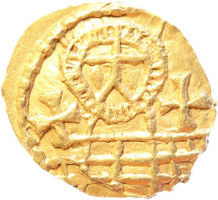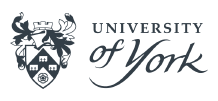England’s Earliest Coinage: The York gold shilling
Tony Abramson

- Friday 9 June 2017, 6.30PM to 7.20pm
- Free admission
Booking required - K/133, King's Manor, Exhibition Square (map)
- No wheelchair access
Event details

Experts have condemned the York gold shilling as ‘devoid of sense’ and later than seventh-century southern shillings. However, archaeologist Tony Abramson’s revelation of the inscription on the gold shilling has rewritten the chronology of early Anglo-Saxon coinage, making it the earliest datable English coin. Tony’s revelation was unprecedented in identifying not only the issuer, but the precise date of issue and the events commemorated.
While the inscriptions on the coinage are now understood, the iconography remains open to interpretation. Join Tony as he turns his attention to possible meanings of the images found on the coin. Who is the weeping standard-bearer on the face of the coin?
The coinage is highly significant to the story of ‘things’ in Anglian York. Around 627AD, St Paulinus brought Æthelburg, sister of King Eadbald of Kent, to York to marry King Edwin of Northumbria. First, Edwin had to be converted and baptised. Paulinus then travelled the extensive territory of Northumbria, carrying out mass-baptisms. The gold shillings of the York group commemorate those events.
About the speaker
Tony Abramson has studied early Anglo-Saxon coinage since the early 1990s. He has written a number of books on the topic, the most recent of which reclassified the silver proto-pennies or ‘sceats’ issued from the 670s to the 750s south of the Humber and well into the ninth-century in the kingdom of Northumbria. There are more than 650 varieties of these tiny coins, rich in the iconography of the Conversion Period. Tony initiated the biennial symposia in early medieval coinage and is editor of the resulting publications.
Tony qualified as a chartered accountant after graduating in economics from the University of Lancaster in 1970. He spent the last 25 years of his career launching technology start-up companies but has recently retired to take a PhD in numismatics at the Department of Archaeology, University of York.
Tickets
You may also like...
This event is part of the Eoforwic: Anglian-era York festival theme. Also in this theme:

